This is a question I asked several months ago and am still struggling to come to a solution. My code gives me a basemap and a contour plot side by side (but printing to file only gives the contour plot), but I want them superimposed. The best solution would the one here https://gist.github.com/oblakeobjet/7546272 but this does not show how to introduce the data, and it is difficult when you are learning from scratch online. Without tiring very kind people, I hope the solution is easy as changing a line of code and that someone can help. My code
#!/usr/bin/python
# vim: set fileencoding=UTF8
import numpy as np
import pandas as pd
from matplotlib.mlab import griddata
from mpl_toolkits.basemap import Basemap
import matplotlib.pyplot as plt
#fig = plt.figure(figsize=(10,8)) #when uncommented draws map with colorbar but no contours
#prepare a basemap
m = Basemap(projection = 'merc',llcrnrlon = 21, llcrnrlat = -18, urcrnrlon = 34, urcrnrlat = -8, resolution='h')
# draw country outlines.
m.drawcountries(linewidth=0.5, linestyle='solid', color='k', antialiased=1, ax=None, zorder=None)
m.drawmapboundary(fill_color = 'white')
m.fillcontinents(color='coral',lake_color='blue')
parallels = np.arange(-18, -8, 2.)
m.drawparallels(np.arange(-18, -8, 2.), color = 'black', linewidth = 0.5)
m.drawparallels(parallels,labels=[True,False,False,False])
meridians = np.arange(22,34, 2.)
m.drawmeridians(np.arange(21,36, 2.), color = '0.25', linewidth = 0.5)
m.drawmeridians(meridians,labels=[False,False,False,True])
fig = plt.figure(figsize=(10,8)) # At this position or commented draws teo figures side by side
#-- Read the data.
data = pd.read_csv('../../data/meansr.txt', delim_whitespace=True)
#-- Now gridding data. First making a regular grid to interpolate onto
numcols, numrows = 300, 300
xi = np.linspace(data.Lon.min(), data.Lon.max(), numcols)
yi = np.linspace(data.Lat.min(), data.Lat.max(), numrows)
xi, yi = np.meshgrid(xi, yi)
#-- Interpolating at the points in xi, yi
x, y, z = data.Lon.values, data.Lat.values, data.Z.values
zi = griddata(x, y, z, xi, yi)
#-- Display and write the results
m = plt.contourf(xi, yi, zi)
plt.scatter(data.Lon, data.Lat, c=data.Z, s=100,
vmin=zi.min(), vmax=zi.max())
fig.colorbar(m)
plt.savefig("rainfall.jpg", format="jpg")
The plots I get look like this  and
and 
and my data
32.6 -13.6 41
27.1 -16.9 43
32.7 -10.2 46
24.2 -13.6 33
28.5 -14.4 43
28.1 -12.6 33
27.9 -15.8 46
24.8 -14.8 44
31.1 -10.2 35
25.9 -13.5 24
29.1 -9.8 10
25.8 -17.8 39
33.2 -12.3 44
28.3 -15.4 46
27.6 -16.1 47
28.9 -11.1 31
31.3 -8.9 39
31.9 -13.3 45
23.1 -15.3 31
31.4 -11.9 39
27.1 -15.0 42
24.4 -11.8 15
28.6 -13.0 39
31.3 -14.3 44
23.3 -16.1 39
30.2 -13.2 38
24.3 -17.5 32
26.4 -12.2 23
23.1 -13.5 27
